The Youth Conservation Corps: Has Its Time Arrived?
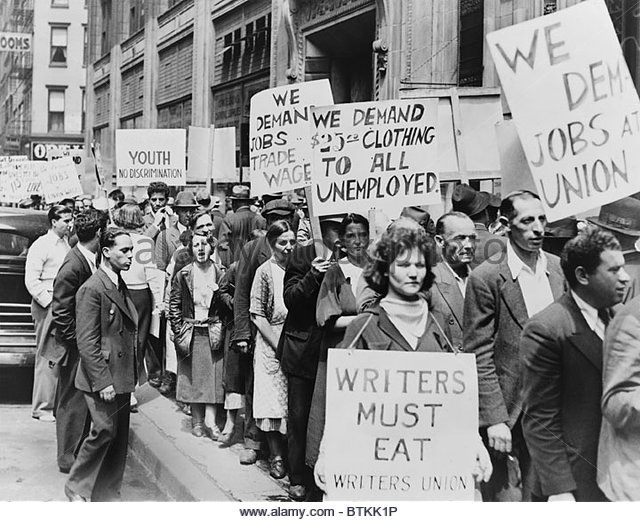
Take the time to both read this post and share it with friends. There are lessons from over 80 years ago from which society–and the economy–would benefit greatly.
Franklin Delano Roosevelt—FDR—is one of America’s most revered presidents. He had his faults and flaws just like any other human being. However, he was an incredible visionary who could also quickly put into action new initiatives for the benefit of the country. One such initiative, the focus of this post, was the Civilian Conservation Corps (CCC).
The CCC is referred to in biographies on FDR. However, the PBS documentary on the CCC, American Experience, provides a much fuller appreciation of the genius of FDR. The documentary is fascinating to watch because it was based largely on interviews with men who had worked with the CCC when they were teenagers. A few quotations from these men are included later on to hear it in their own words. This is a remarkable story, and one that has applications to the plight facing young people in today’s tough economy and job market.
In conjunction with this post is a brief mention of a second American Experience documentary that complements the CCC: Black Blizzards, a terrifying occurrence during the Dust Bowl of the Dirty Thirties.

President Roosevelt knew that something had to be done quickly to prevent social unrest and to also produce something tangible for America’s future. As a conservationist, he conceived the idea of a corps of American men who would address the country’s decades-long abuse of the environment, while simultaneously providing employment. The CCC would be America’s fastest and most competently executed mobilization of citizens in its history. As FDR biographer Jonathan Alter put it: “The lessons for today could hardly be fresher.”
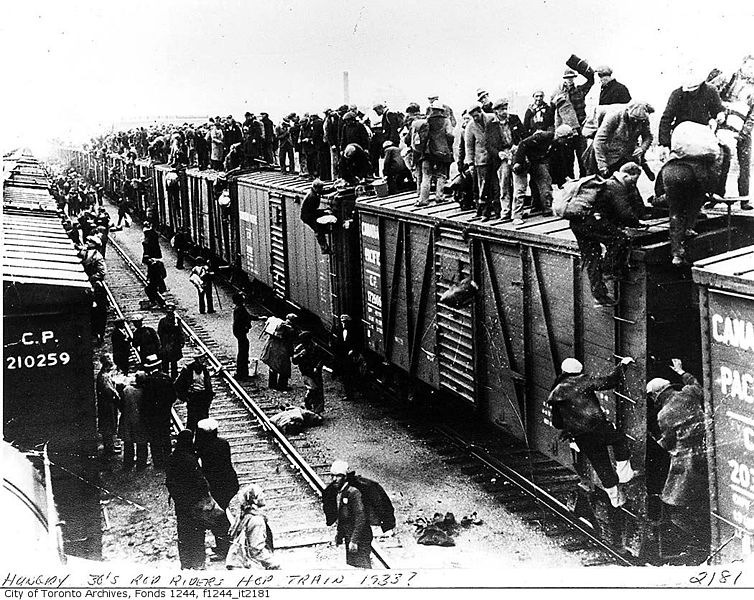
The CCC was launched in 1933. It should be noted that it was just one of several jobs programs initiated by FDR during The Great Depression.By the summer of 1933, just three months after being launched, a quarter of a million men were part of the CCC. The requirements to be part of the CCC included: U.S. citizen, male, under age 25, unemployed, and willing to spend six months with the CCC earning a dollar a day. Organized labor balked at the daily wage, so FDR in typical strategic fashion appointed a union person to head up the program.
Each state was part of the CCC and had a quota in the number of work camps, where each one had 200 men. African Americans were part of that quota, reflecting the 10% of the country’s population. However, in keeping with the prevalent attitudes their camps were segregated.
In addition to the massive number of unemployed Americans, the situation in the heartland of the United States was becoming desperate. Early settlers to the Southern Plains saw the land as the Garden of Eden, where crops were bountiful. The attitude was to go forth and challenge the land, and during World War I and the 1920s that’s just what the settlers did. Millions of acres of grasslands were ploughed under as the federal government pushed for more crops to be planted to feed the rapidly growing urban populations. In 1931, for example, a record was set for wheat harvest. Texan Melt White explains what took place in blunt terms: “They abused the land…they raped it; they got everything out of it they could.”
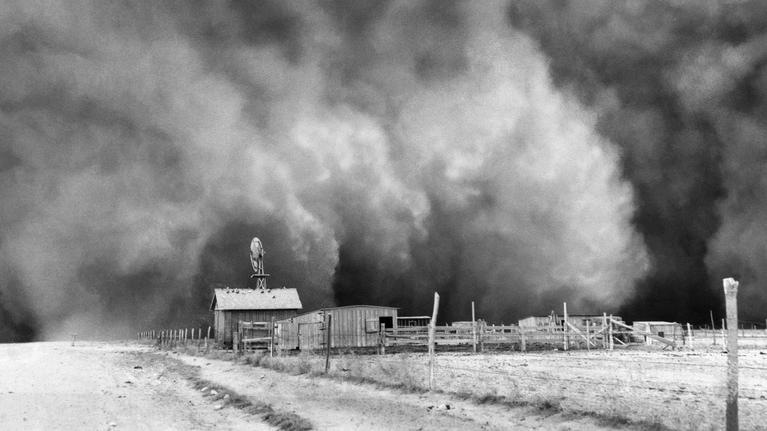
Between 1932 and 1933, the number of dust storms increased from 14 to 38. Bizarrely, farmers kept ploughing their land, worsening the problem. By 1934 the number of storms had increased further. The incoming clouds had different colours, depending on from which state they originated. Farmers resisted help from Washington because they believed that it was their responsibility to provide for their families.
However, in 1934 the government began destroying cattle since they were worthless. As one old-timer put it, the Southern Plains began to resemble the Sahara Desert.The Civilian Conservation Corps was therefore launched at one of the most critical times in America’s history, and as noted earlier, has never since been replicated for its effectiveness and positive impact. Let’s now hear from those men who were part of the CCC.
Clifford Hammond, who was raised on a farm, joined the CCC in 1934 at age 18. For him, life was about chores and eating cornbread at every meal. His father knew nothing about crop rotation, fertilization or soil erosion. One of Hammond’s teachers tried to teach modern farming practices, but was ignored by the farmers in the community. As Hammond put it: “If it hadn’t been for Roosevelt in establishing the CCC, I don’t know what a lot of us young guys would have done. I don’t know what my next step would have been.”
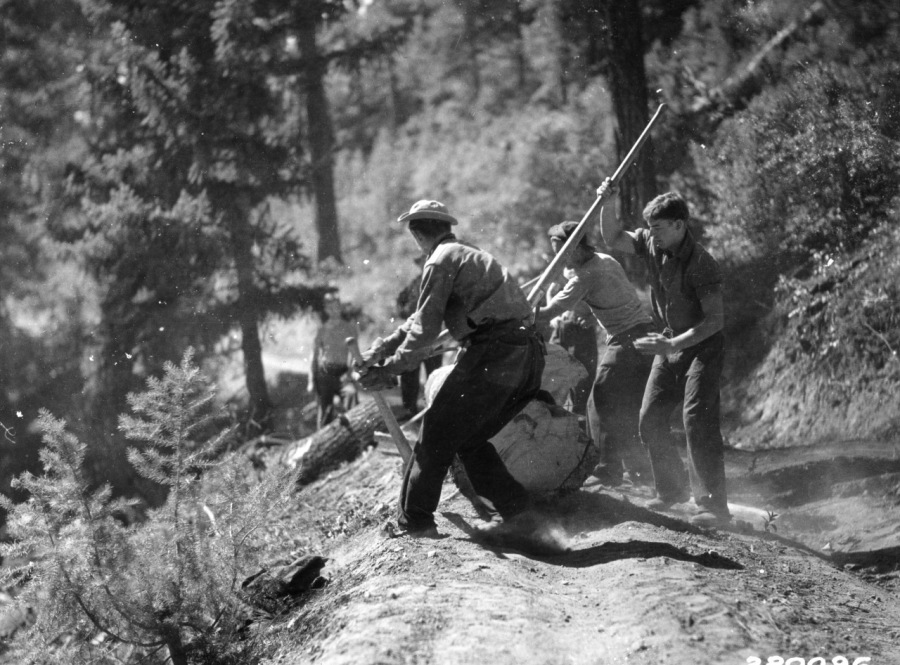
Harley Jolley joined the CCC as a teenage in 1937. He recalled “…playing in gullies two stories high. That was my playground….all that erosion and that much good land gone. The soil erosion we were losing annually was enough to load a series of boxcars seven times around the earth.”
Jolley recalled their hard work. Returning to their barracks in late afternoon, they’d eat supper and then engage in courses in the evenings. As he put it: “I became much sounder in body, built good legs, that territory as well. And I wound up a fairly good, healthy young teenager.”
It was the evening courses that helped these young men later in life. Many were illiterate, and as Jolley stated: “FDR said ‘they will be taught to read and write. Nobody, no boy will leave our camps illiterate.’” Courses included electrical and plumbing, including typing classes.
Vincente Ximenes, born in Texas, joined the CCC in 1938 at age 19. He remembered the soil as being totally depleted, with cattle being rounded up and slaughtered because there was no market for meat. And he recalled clearly the growing anger among people with the government: “The seeds were there. I mean, the people were there who were angry enough to do it. I would say that FDR is the one that saved this country, you know, from having a revolt.”
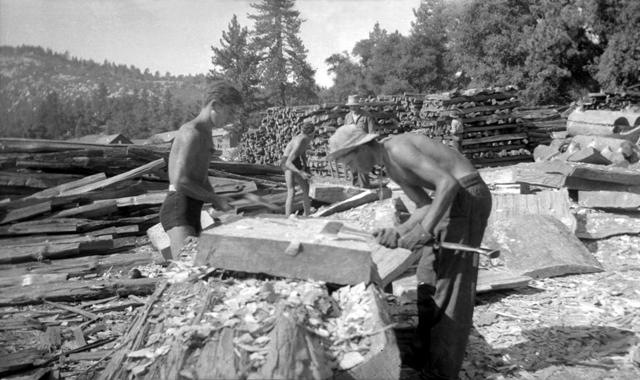
FDR: “First, we are giving opportunity of employment for a quarter of a million of the unemployed, especially the young men who have dependents. Let them go into forestry and flood prevention work….in creating the Civilian Conservation Corps, we are killing two birds with one stone. We are clearly enhancing he value of our natural resources. And, at the same time, we are relieving an insatiable amount of actual distress.”
One of the important aspects of the CCC was that $25 of the $30 monthly pay was sent to the workers’ families. These remittances were extremely important to helping distribute income during the Great Depression, and as well helped ensure that the men didn’t squander their earnings.
The CCC was responsible for building a number of well-known American sites, such as Camp David and Carlsbad Caverns, not to mention state and national parks. One major impact from their work in later years was the advent of recreation as a major industry in the U.S.
The entry of the United States into World War II was responsible for the phasing out of the CCC. The huge demand for men to enlist in the U.S. Armed Forces resulted in the program ending in July 1942. However, America now had a large contingent of men who had been part of the CCC and who were ready to serve their country.
As Vincente Ximenes bluntly put it: “Without the CCC, I really don’t know what we would have done. We did not have an army prepared to go to war. And here was approximately two and a half or three million men who were prepared and had been organized to work together. I joined the Air Force in 1941, and they didn’t have to do a hell of a lot of training for me. I was prepared.”
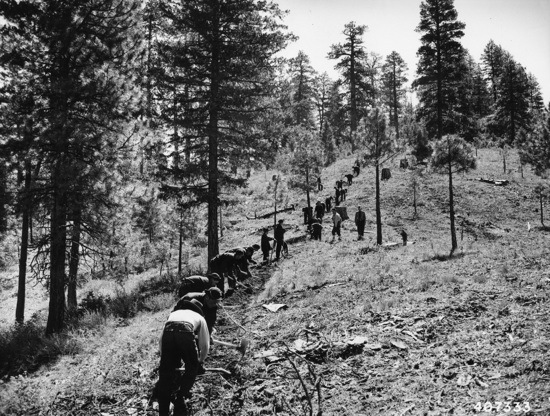
Clifford Hammond remembered meeting a woman at an event for seniors not long ago. Once they started talking, she knew exactly which CCC camp he had worked in many decades earlier. As she said to him: “You couldn’t visualize what a change you guys made.”
FDR: “I am thinking of you [CCC] as a visible token of encouragement to the whole country. Through you, the nation will graduate a fine group of strong, young men, clean-living, trained to self-discipline, and above all, willing and proud to work for the joy of working. That, my friends, must be the new spirit of the American future. And you are the vanguard of that new spirit.”
What became of these four men?
– Harley Jolley became a professor of history,
– Vincente Ximenes built a career in government and served in the Kennedy and Johnson administrations,
– Clifford Hammond owned and operated Cliff’s Amusement Park in Albuquerque for 50 years,
– Houston Pritchett worked for Ford for 31 years.
A FEW QUESTIONS FOR REFLECTION AND ACTION:
1) What lessons can we draw from the success of the Civilian Conservation Corps?
2) Are there relevant applications to today’s economy and job market?
3) To avoid what has been labeled “The Lost Generation,” what should we do to ensure that youth in all socio-economic strata across North America are able to contribute productively to their countries’ futures?
“Give me your help, not to win votes alone, but to win in this crusade to restore America to its own people.”
— Franklin D. Roosevelt
__________________________________________________________________________________________________
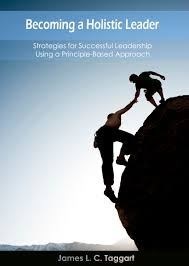
""""""""
Articles from Jim Taggart
View blog
In my last post I talked about building team performance. Today, we look at what kind of team player ...

Teamwork is talked about widely in organizations, but often with little understanding of what it mea ...
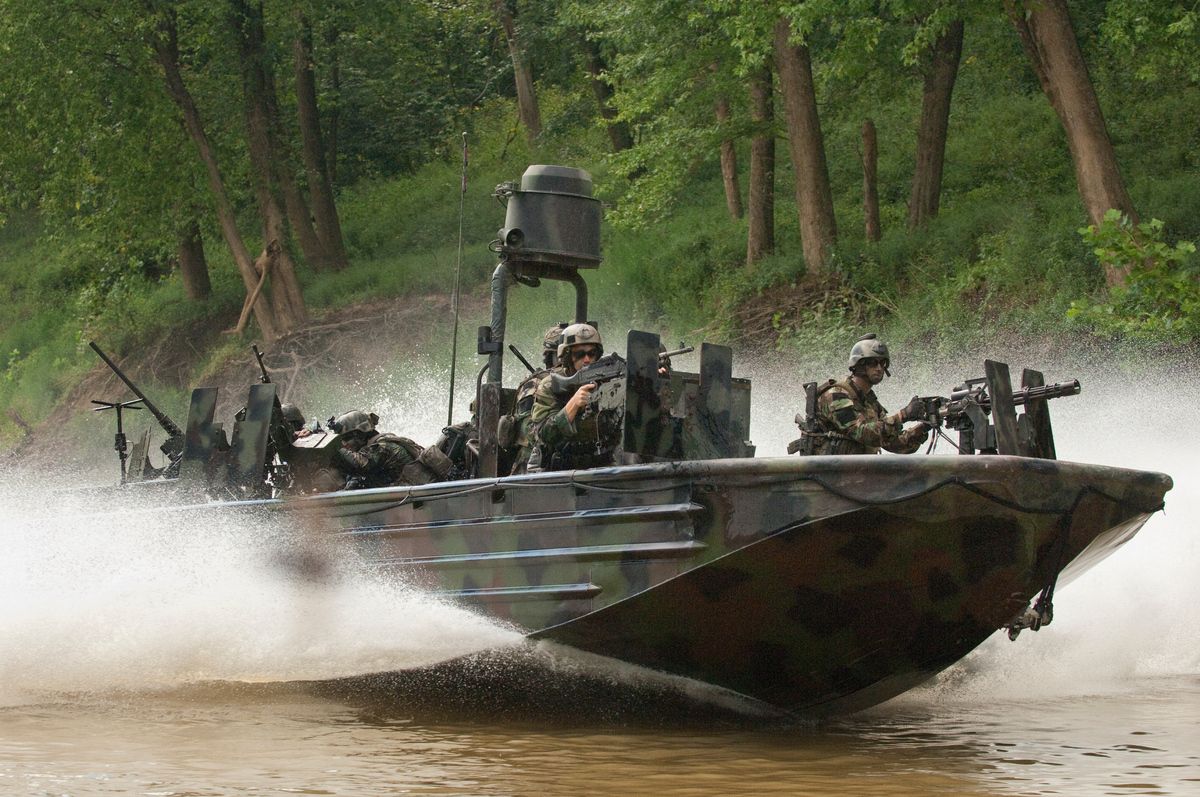
In the previous post Is Your Team REALLY a Team? Why Instant Pudding Doesn’t Cut It we looked at the ...
Related professionals
You may be interested in these jobs
-

UI/UX designer developer
Found in: Jooble CA O C2 - 3 days ago
Shopistry CanadaUI/UX Designer / Developer - Saaslify X - Webflow Ecommerce website template UI/UX Designer / Developer · Full time Canada Lorem ipsum dolor sit amet, consectetur adipiscing elit vel ut congue varius congue aliquet leo netus neque nibh semper in diam viverra nibh aliquam elit am ...
-
dispatchers supervisor
Found in: Talent CA 2 C2 - 4 days ago
Shabad Transport Inc. Vaughan, CanadaEducation: · Expérience: · Education · Secondary (high) school graduation certificate · Work setting · Transportation · Tasks · Establish work schedules and procedures · Co-ordinate activities with other work units or departments · Prepare and submit reports · Ensure smooth ope ...
-
shift manager
Found in: Talent CA 2 C2 - 3 days ago
McDonald's Restaurant Steinbach, CanadaEducation: · Expérience: · Education · Secondary (high) school graduation certificate · Work site environment · Noisy · Hot · Work setting · On-site customer service · Restaurant · Tasks · Establish methods to meet work schedules · Supervise and co-ordinate activities of staff ...



Comments
Paul Walters
6 years ago #1